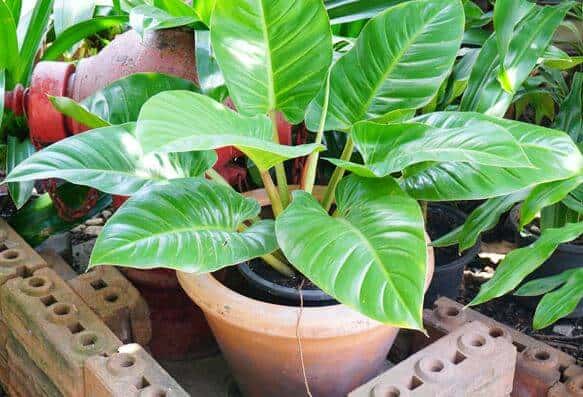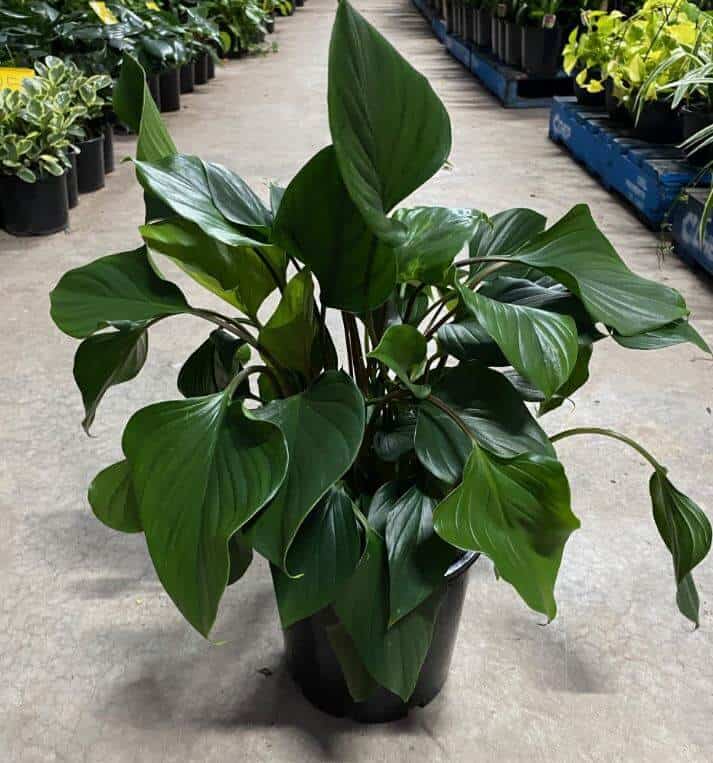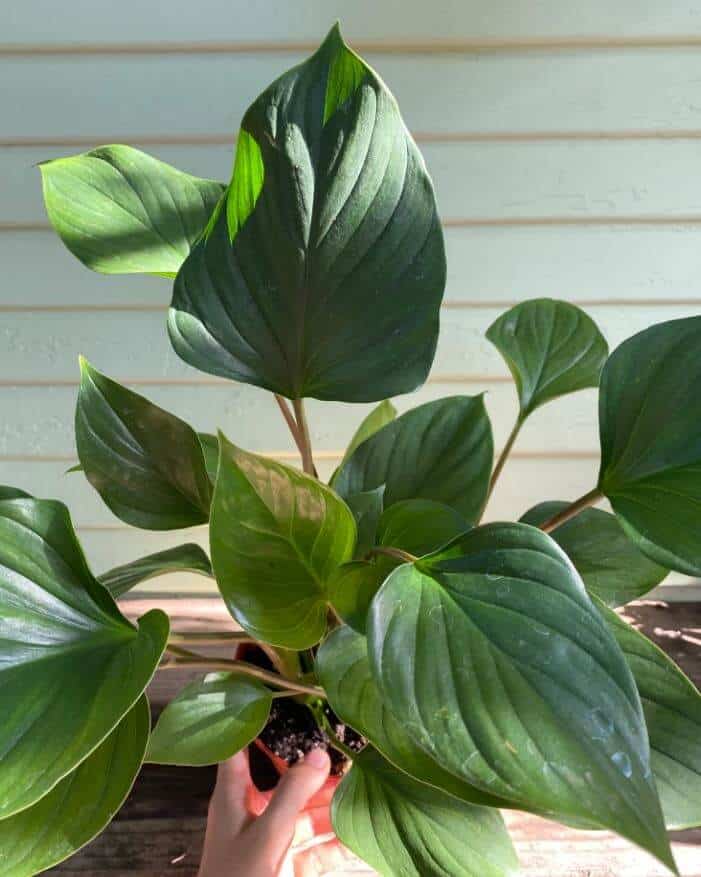Last Updated on May 28, 2023 by a Friendly Gardener
The Emerald Gem plant belongs to the Homalomena genus and is originally from South America and tropical Asia. It’s a straight-growing plant that has dark green leaves shaped like spades with a waxy texture.
The plant grows from 12 to 30 inches which makes it a perfect fit for locations that have a height restriction. These are philodendrons, but they are not the easiest to care for. They need more attention, but they still make for good houseplants.
Unfortunately, Emerald Gem plant flowers are not so common. And all you can do to hope to see them is to feed the plant well. We’ll talk about that in a minute.
At this time, it’s important to remember that they are a bit poisonous, which means you should keep them out of the reach of kids and pets.
Emerald Gem Plant Care

If you want to get one of these plants for your home, you will need to know the Emerald Gem plant care guide inside out. Here’s what you need to know.
Light
The light requirements of this plant can be described as medium, but if you can find a place where it will get bright but indirect light, that would be best. These plants can also survive in low lighting conditions, but you will notice that they become spindly and thin.
And the bottom of their leaves will turn yellow in color before they fall.
Water
This might be the toughest aspect of caring for these plants. If you don’t give them enough water, you will see that the leaves at the bottom of the plant will start falling off. However, if you give them too much water, they will turn yellow in color.
In fact, overwatering is usually what messes with the composition of the leaves and turns them yellow. So, it is important to check the top 50 percent of the soil before you decide to water these plants.
You should make sure that the top half of the soil is dry. And even then, you should check the pot’s drip holes to make sure that the water is draining out of it. It’s also key to note that these plants don’t do well with anything that’s too cold.
So, you might want to consider using warm water. Some gardeners have the habit of dumping ice cubes in the soil, which is something you should never do with these plants.
Soil

These plants grow very well when they are plated in quick-draining soil that is also loose. You should make sure that there is plenty of hard sand, perlite, and peat moss added to the soil. This will keep the roots from rotting if you accidentally overwater them.
Temperature and Humidity
As mentioned earlier, these plants are native to tropical parts of Asia. So, it should come as no surprise that they do well when they are kept away from cold drafts and air conditioners.
The ideal temperature for the growth of the emerald plant is between 65 and 80 degrees F. Levels of humidity aren’t a big problem, but they do prefer places that have high humidity.
If you’re planting them inside your house, you should make sure that the spot they are in contains enough and more moisture around it. If you live in dry regions, you should consider planting them in a pebble tray that has enough water. This will keep them damp.
You can also add a humidifier to the room to make sure the dry environment doesn’t affect its growth, or worse, kill the plant.
Fertilizing
This plant will do well if you give it an extra boost of nutrients in the form of fertilizers. You can do this once a month when it is in its growing season, that is in summer and spring.
You should also make sure that the fertilizer is diluted by half so that it gets a balance of nutrients. That means you can use houseplant food, but it should be diluted to 50 percent of what is recommended in terms of strength.
When you enter the fall and winter seasons, you can fertilize it once every two months as long as you see that it is producing fresh leaves.
Potting

These plants are a bit bound by their roots. So, when you see that the roots have filled the pot, it is time to repot them. You will notice that the roots are curling at the bottom.
At that time, you should get a container of the next size, which is usually a growth of one to two inches and not bigger than that. And the new pot should also have a good deal of dripping holes at the bottom.
Typically, these plants start off with containers that are 6 to 10 inches big. Since they are root bound, this is not a big size to start them off with. You should also get fresh soil for this bigger pot so that the plant gets all the nutrients it can from the soil.
And on top of that, you can add a fertilizer based on its existing schedule. It’s also good to remember that the plants take a break from growing when winter begins and that’s when you should go easy on the fertilizer as well.
Propagation

The easiest and best way to propagate these plants is by division. And you should do it in the spring season when they are in their growing phase. That is also a good time for repotting so it all comes together quite well.
You should spot and remove one section of a rhizome that typically has two or three leaves. Get a pot that is two to three inches deep and plant them in it with a 50-50 mix of sand and peat moss. The soil in the pot must be nicely moistened.
To help the rhizome retain its moisture, you can place a plastic cover on the pot and ensure that the plant is in a warm spot in the house. Here, it should receive medium light. After that, you wait for the roots to grow.
Pests and Diseases
These plants don’t have a huge pest problem which is good. But you should keep an eye out for spider mites, white flies, and mealybugs.
Wrapping Up

These plants can be a bit finicky with their water requirements. And they also need a little bit of fertilizer to ensure healthy growth. But when it comes to light, they make no fuss and that’s got to be helpful.

